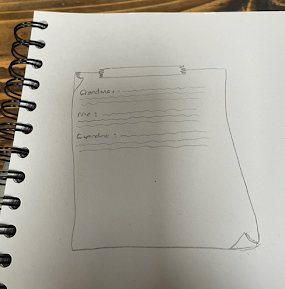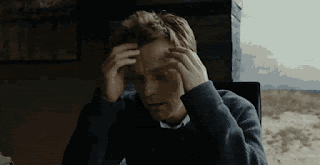I've been thinking about suspending disbelief. Oh, morning! How are you? Let's crack on. Over recent months, I've been mulling over the concept of suspending disbelief. Why? We'll get to that in a bit. First, here's an official definition of what I'm on about.
'Suspend Ones Disbelief: To ignore or look past ones incredulity at the improbability of something that occurs within a piece of fiction in order to better the experience of the work.'
The Free Dictionary
We do it all the time, don't we? Suspend our disbelief. For the duration of my last cinema visit, I fully believed that Timothée Chalamet's Wonka was real. I bought into his emotional journey. I felt his pain and then his joy when he finally defeated the bad guys. That's what happens at the cinema. Despite the fact that during the film, Wonka's chocolates make people fly, Hugh Grant is an Oompa Loompa, and a giraffe is milked - yes MILKED - I was all in. Of course, as soon as I left the Odeon, I was back to my usual self. I talked about the plot, the skill of the screenwriters, and the fab special effects. In other words, I talked about the reality of cinema. But for the duration of the film, reality was on hold. Fun!
I saw it loads when I was teaching. In my Y1 classroom, there was a building site role-play area. As soon as children spent time there, they'd take on a role. They'd be putting on a hard hat and digging foundations, never once put off by the fact they were actually in a corner of the classroom. They knew it wasn't really a building site but they'd pretend to operate a pneumatic drill as if it were. Afterwards, if I'd asked them if they were builders for real, they'd have looked at me like I was mad. Of course they weren't. They were just playing! Like we all just play when we watch TV, read a book, or play a video game. We suspend disbelief for as long as the fiction takes place. Then we carry on with our day.
 |
| Book One in the series |
Unlike Wonka, it's very realistic. There's no fantasy element that defies logic. The life of an eleven year old girl is relatable. Even to people that aren't or weren't eleven year old girls. There are no flying chocolates, orange Hugh Grants, or milked giraffes. There's school. There are friendships. There's a first kiss and working out who you are. There's hardly any reason to suspend disbelief at all.
Except of course there is. It's just different. The fiction I've created is that Leeza has written a diary. And you, dear Reader, are reading it. No matter how realistic and relatable the events in that diary, it's still a printed book. It's in a consistent font, with no spelling mistakes, crossings out, or doodles. The readers of Leeza McAuliffe's diary have to believe that this is the book she writes in, every night before bed. It's the book she keeps under her mattress. It is not the creative output of Nicky Bond, whose name is on the cover.
And you know what? I'm fine with that. It's what readers do. When I think back to reading Sue Townsend's Adrian Mole, she had a similar problem. Except she didn't. Because when I read Adrian Mole, I never once thought, 'But this is too unbelievable. It's not handwritten. I can't carry on because I'm being duped.' Nah, I read it and loved it. I suspended disbelief.
It was once I'd finished the manuscript that I started to ponder all this. Because there was one aspect of my novel that I wasn't sure readers would accept. Here's the context. In the story, there's a major plot point surrounding Leeza's family. And in order to deep-dive into the character of her maternal Grandma, I made Leeza's History teacher set a piece of homework. She has to interview someone older in her life, about their childhood. So, Leeza interviews her Grandma and finds out lots about her. So far, so good, right?
In my first drafts, we see the transcript of the opening of the interview. As the book progresses, Leeza includes a few more chunks of the transcribed interview, as they become relevant to the plot. Again, so far, so good, yeah? Except I had a problem. Considering how realistic the plot of the story is, it made zero sense for Leeza to spend hours transcribing an interview into her History book and then write the whole thing out again in her diary. No one would do that, let alone a girl who's sick of homework.
So I changed it. In the next drafts, Leeza explains that she's typed up the interview on the family computer, and stuck a copy into her diary. Yeah? OK? Good. That worked for me too. It made sense she might do that. But then another thought occurred. The extract of interview in her diary was in the same font, the same ink, and the same format as the rest of her diary. It didn't look like a separate piece of paper stuck in. Would readers suspend their disbelief and gloss over that small glitch or would it ruin their acceptance of the story? Who knows?
 |
As is often the case, I wished I was more technologically minded. If I had a clue about Canva or InDesign or any of that jazz, I could've created some sort of picture. A picture of a piece of paper that's been stuck into the diary. On the paper would be Grandma's interview typed up. But how to make that happen was beyond me. In the end, I forgot about it and hoped readers would stretch their suspended disbelief a little bit further.
The thought wouldn't shift, though. I've spent two years on this novel. The last thing I want to do is knowingly make it less than perfect. (Of course it'll be less than perfect. I just won't KNOW about it.) In the end, I accepted this was an issue. I had to be proactive. Next thing you know, I'm emailing Gary, the man that designs my covers and makes the look of my books so fab. He would know what to do.
 |
| Enjoy my sketch! I had to Google, 'How to draw a curled corner.' |
But now, it's sorted. Yep, we've jumped right up to the present day. Gary's played a blinder and I've got seven jPegs inserted into the manuscript. Each one depicts either a chunk of the History homework interview, or at one point, a letter that Leeza receives. They look properly good. A piece of paper, with a bit of tape across the top, inserted into her diary. Just as would happen in real life.
It's been interesting to have to work this out. How far can I take readers with me? Do I think they'll accept that Leeza's written this diary? Yes. Do I think they'll accept she's typed up her homework and stuck it in, if it doesn't immediately look like she's done that? Not sure. Maybe not. Whatever happens in the future, my book's got some cracking illustrations of inserted pieces of paper. I might not have gone the whole hog and added doodles and crossings out, but I'm really happy how it's turned out.
Suspending disbelief is such an interesting concept. How far do you allow yourself to be pushed towards incredulity? For me, who tends not to enjoy fantasy or sci-fi, not very far. But then something like Doctor Who or Years and Years comes along, and I love it. That's Russell T Davies for you. Get a great writer and I'll go along with anything. Likewise, one of Wonka's screenwriters was Simon Farnaby, one of the people behind the sitcom Ghosts. If you asked me if I want to watch a programme about a haunted house, I'd say no. If you asked me if I wanted to watch a comedy written by the same team as Horrible Histories, I'd say yes.
All this Longer Ramble shows is that everything comes down to the writing. I don't think I realised that until now. Get the writing right and you can convince anyone of anything. That's definitely something to remember and definitely something to work towards.
Have a lovely week, folks.


This blog had a lot more depth than usual!
ReplyDeleteA backhanded compliment? Haha, thank you!
Delete